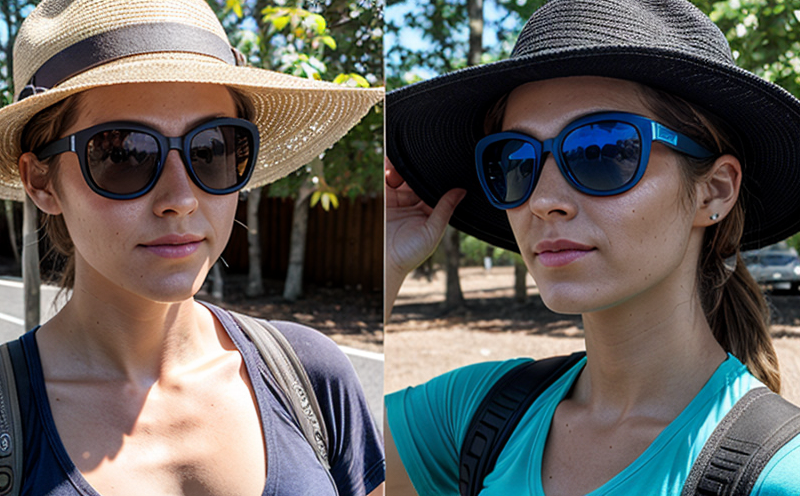Laboratory analysis of fabric transparency to solar radiation
When it comes to selecting materials that protect against ultraviolet (UV) radiation and visible light, understanding how fabrics transmit these wavelengths is crucial for ensuring effective sun protection. This service involves detailed laboratory analysis aimed at quantifying the transparency of textiles to both UV and visible light. By analyzing fabric samples under controlled conditions, we can provide precise data on how much solar radiation passes through different materials.
This information is vital in sectors such as clothing manufacturing, where ensuring comfort while maintaining adequate protection from harmful UV rays is paramount. For instance, outdoor apparel brands need to balance breathability and UV resistance, making accurate transparency testing essential for product development. Similarly, in the design of window treatments or architectural fabrics, understanding light transmission helps architects and designers create spaces that are both aesthetically pleasing and functional.
The process begins with careful specimen preparation. Samples must be cut according to standard dimensions, ensuring consistency across tests. Once prepared, they undergo rigorous analysis using specialized equipment capable of measuring the amount of UV and visible light transmitted through the fabric. The results provide critical insights into not only the overall protection level but also how specific wavelengths behave within certain materials.
Understanding these nuances allows manufacturers to make informed decisions about material selection, optimize designs for optimal performance, and meet regulatory requirements. This service ensures that every product meets or exceeds specified standards, delivering reliable performance across various applications from casual wear to professional uniforms.
Why It Matters
The importance of analyzing fabric transparency cannot be overstated in today’s world where UV radiation poses significant health risks. According to the World Health Organization (WHO), prolonged exposure to UV light can lead to skin damage, including premature aging and increased risk of skin cancer. By accurately measuring how much solar radiation passes through fabrics, this service helps ensure that protective clothing and other products effectively shield users from these hazards.
For those working in environments with high UV levels, such as construction workers or outdoor professionals, having access to garments that provide robust UV protection is crucial. Similarly, consumers looking for stylish yet practical options need assurance that their chosen attire offers adequate defense against harmful sunlight. The data generated from this analysis enables companies to produce products tailored specifically to meet consumer needs and regulatory expectations.
Moreover, the ability to control light transmission opens up possibilities for creating innovative designs that enhance both functionality and aesthetics in architectural settings. Whether it’s designing window treatments that allow natural daylight while minimizing glare or developing smart fabrics capable of adjusting based on environmental conditions, precise transparency measurements play a key role in achieving these goals.
Applied Standards
| Standard | Description |
|---|---|
| ISO 20645:2012 | Method for determining the ultraviolet protection factor (UPF) of fabrics. |
| ASTM E398-14 | Standard test method for determination of visible light transmission and hemispherical reflectance of fabrics. |
Why Choose This Test
Selecting the right fabric for UV protection involves more than just looking at its color or thickness; it requires knowing exactly how much of the sun’s harmful rays can penetrate. Our laboratory analysis provides this crucial information, ensuring that every product meets or exceeds industry standards.
With our service, you gain access to state-of-the-art equipment and experienced professionals who understand both the technical aspects and practical implications of fabric transparency testing. This ensures accurate results that are reliable and repeatable. Whether you’re developing new products or troubleshooting existing ones, this level of precision is essential for success.
Additionally, by partnering with us, you benefit from our deep industry knowledge and commitment to excellence. We stay up-to-date on the latest research and developments in textile science, ensuring that your testing aligns with current best practices. This allows you to make informed decisions confidently, knowing that each step of the process adheres strictly to established protocols.
Our comprehensive approach also includes detailed reporting tailored specifically for your needs. From clear explanations of test procedures to easy-to-understand visualizations of results, our goal is to provide insights that are both actionable and informative. By leveraging this service, you can confidently communicate the protective capabilities of your products to customers and stakeholders alike.





